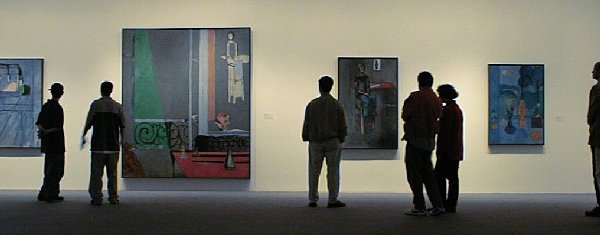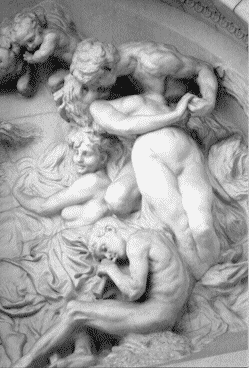At the Art Museum
Today, a security guard explains creativity to me. The University of Houston's College of Engineering presents this series about the machines that make our civilization run, and the people whose ingenuity created them.
Last night at the art museum, my mind gradually slowed from its work-a-day churn, into reflection. Finally, in the exhibit of modern Texas art, I asked a security guard, "With all the hours you spend in here, which is your favorite work?"
"Sir," he said, "as a matter of policy, we don't express opinions on the art." He paused, then smiled. "I'm going to break that rule and tell you. Actually, I like all the art."
I laughed at his self-deprecatory, fool-nobody, diplomacy. He'd put me in the right frame to enjoy the good humor of modern art. When we passed again, I said, "Someday, you'll be president of the United States." He pulled a long face: "Now why should you have such a low opinion of me!" Then he said,
Let me give you the real answer to your question. The finest art in this room isn't hanging on the walls. It's the people who come through here. People aren't the same in here as they are walking through a supermarket, you know. They're different. They're open. They come here to be changed.
I looked at the man with astonishment. Of course! That's what art is all about. He'd gone right to the center of it.
Long ago, Louis Pasteur talked about creativity. He said, "Chance favors only the prepared mind." But while Pasteur offered no guidance as to how we prepare our minds, that security guard did. People don't move through museums the way they move through supermarkets. Art is more than just a product served up for our pleasure. Art is a trigger to our imaginations.
We all live in need of ideas. We all have problems to solve. At some point, most of us realize that, when our problems need creative solutions, they cannot be attacked with purely methodical tools. Method takes us down familiar roads. Creativity means seeing the shrubbery-shrouded side roads that we ignore by habit.
The hardest thing in the world is to leave the highway and float above the land. Music, theater, sculpture -- they all cut us loose from the road of method and common sense.
The so-called creative leap isn't a leap in the dark -- without antecedents or stimulus. Rather, it happens when we find a liminal state, on the very edge of awareness, where ideas arrive without order or hierarchy. In that mental world, cowpaths are as important as freeways. And one way to find that creative state is to give ourselves over to art.
Inside the museum, we lay aside our shopping lists of needs to be met. Art serves us when we leave our supermarket lives to wander the woods, eating the unexpected nuts, berries, and wild fruit.
That's what that security guard saw. He saw people without shopping lists, ready to be taken into alien spaces. He'd seen you and me, ready to be led onto byroads of thought, ready to wander into places we didn't know were there -- and so very close at hand.
I'm John Lienhard, at the University of Houston, where we're interested in the way inventive minds work.
(Theme music)

A scene in the New York Museum of Modern Art
(Photo by John Lienhard)

A frieze that rides above a public building in
Mexico City. Whatever is the message, it is
complex, abstract, and out in the open air.
(Photo by John Lienhard)